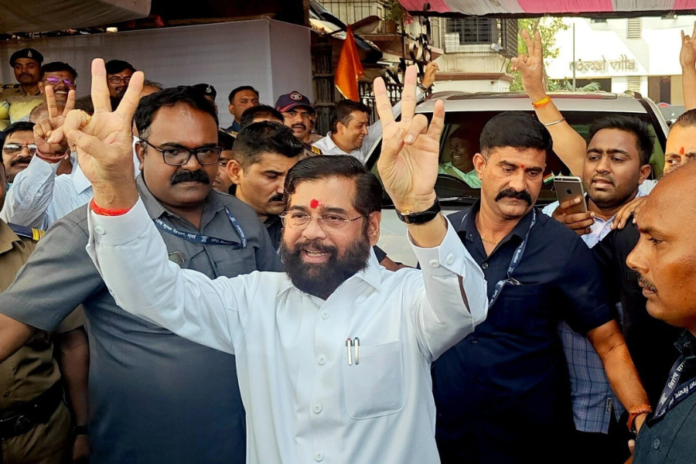One cannot blame the INDIA alliance for thinking it had a very good chance of winning the assembly polls in Maharashtra and Haryana after its dominant showing in the Lok Sabha elections earlier this year. Nevertheless, Maharashtra and Haryana surprised everyone by giving the ruling BJP an unprecedented mandate due to their different political environments and demographics. The BJP not only made an incredible return under Prime Minister Narendra Modi, but it also dispelled skepticism about its political clout.
The BJP ended the fierce 2024 election season on a positive note, teaching the INDIA bloc a valuable lesson. Using cricket as an example, the opponents started off as favorites but finished up as “chokers.”
A master class in political strategy, the Maharashtra assembly elections showed that with careful preparation and effective execution, no war is insurmountable. The opposition was less quick to read the minds of the voters than the BJP, which changed its approach and language. Despite the BJP’s vigorous campaigning, there is a bright spot for them: the Jharkhand Mukti Morcha-Congress combination was able to secure victory in Jharkhand.
The ruling parties have performed well, defeating anti-incumbency candidates in this round of Maharashtra and Jharkhand assembly elections and numerous by-elections in other states. Take West Bengal, which was in disarray when a doctor was raped and killed, which damaged Chief Minister Mamata Banerjee’s reputation. All six seats were won by the ruling Trinamool Congress in a landslide victory. In Karnataka’s south, the ruling Congress won all three seats that were up for election, even though Chief Minister Siddaramaiah was under fire for alleged corruption. The National Democratic Alliance fielded two former chief ministers’ sons, Nikhil Kumaraswamy and Bharath Bommai, but they lost the polls. Additionally, voters favored parties with clear leadership positions.
The results have once again demonstrated how important female voters are in influencing elections. The most important lesson is to win women over to polling.
Voters in Jharkhand gave the JMM the largest-ever mandate and a historic second term in a succession, despite the BJP’s intense campaign that focused on corruption allegations against Governor Hemant Soren and the divisive topic of Bangladeshi migrants.
The change to the BJP is notable in Maharashtra. It has elected a BJP government for the third consecutive time, joining states like Gujarat, Madhya Pradesh, and Haryana, demonstrating the party’s expanding ideological base. The BJP is the only party in the state to have won more than 100 seats in the last three elections. The opposition Maha Vikas Aghadi should have gained 158 seats in the assembly if the Lok Sabha election results were extrapolated to that number. However, the MVA fell to 50 seats less than six months after the national elections. The complete backing of the RSS cadre in organizing voters and disseminating its message was one significant advantage the BJP had this time.
The BJP used a combination of a welfarist message and a divisive campaign. The ideological slogan, ek hain toh safe hain (unified we remain secure)―a refined version of the polarising batenge toh katenge (would get slaughtered if we stay divided)―is expected to be the party’s war cry in the near future. The Mahayuti had powerful leaders in Eknath Shinde and Devendra Fadnavis, while the MVA leadership appeared uninspired, which further benefited the ruling coalition.
During the assembly elections in Rajasthan, Madhya Pradesh, and Chhattisgarh a year ago, the Congress made a concerted effort to play up the social justice card by promising to conduct caste censuses, but the initiative was unsuccessful. Given the BJP’s resounding win in Maharashtra, the Congress may now need to come up with a fresh catchphrase and story to capture the interest of voters. The prospect of instant financial success and affluence appeals to the younger generation. Committed leaders win ideological battles, but Rahul’s social justice tenet is not shared by all members of the Congress.
The Congress’s pledge to include money in social welfare programs was a major factor in its victories in Karnataka, Telangana, and Himachal Pradesh. In these states, the party won thanks to the giveaways. It was a hard lesson for the BJP to learn. The BJP promised women better cash-based doles, like Madhya Pradesh’s Ladli Behna Yojana, despite its dislike of freebies.
The BJP’s pledge to give women Rs 2,100 a month—100 rupees more than the Congress promised—during the Haryana elections sparked a change in the party’s fortunes.
Following the Lok Sabha elections, Maharashtra’s Ladki Bahin Yojana was introduced, providing Rs1,500 to women. Following the announcement of the results, Shinde pledged to make it 02,100.
By providing women with Rs 2,500, Soren’s Maiya Yojana assisted his party in strengthening its control over Jharkhand. The political landscape in India has recently changed, with women voters becoming more assertive and emerging from the shadow of their male family members.
Also Read: What has led to the new wave of violence in Manipur?
However, even when both parties provide comparable freebies, the BJP outperforms the Congress. For example, the Congress administration in Himachal Pradesh, which provided voters with a number of goodies, is in terrible financial shape and is struggling to make even its salary payments on time. Voters’ choices are impacted by such crises.
Now, attention will turn to next year’s assembly elections. The election of Priyanka Gandhi Vadra from Wayanad to the Lok Sabha could improve the Congress’s standing with the voters. Every party is closely observing her arrival in Parliament. But this time, the BJP will go into the polls in Delhi and Bihar with confidence. Despite dominating the Lok Sabha polls in the previous three elections, the saffron party has failed to win the Delhi assembly elections. One thing is evident to the voters here as well. The BJP has failed to provide an uncontested leader, whilst the Aam Aadmi Party has succeeded.
Tejashwi Yadav of the Rashtriya Janata Dal is the INDIA bloc’s obvious option for leadership in Bihar, giving it an advantage. Despite being an expert at retaining power in the face of adversity, Chief Minister Nitish Kumar appears to be losing support from voters. Prashant Kishor, an election strategist, will also face a difficult test in Bihar. In the by-elections, his Jan Suraaj Party lost badly.
With a political message, the year comes to a close: politics is the art of the possible. The BJP’s poor performance in Maharashtra following the Lok Sabha elections prompted Fadnavis to propose his resignation. He has triumphantly returned in less than six months, as the BJP has won 132 seats in the assembly, which has 288 members.



